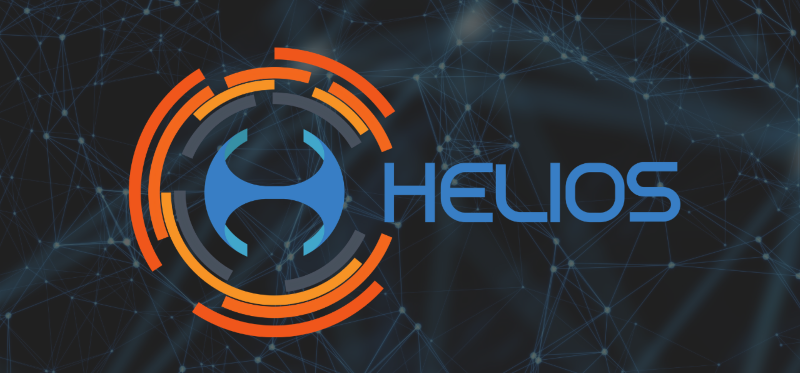Delve into the innovative world of the Helios consensus mechanism – a groundbreaking approach that’s redefining the blockchain landscape. Discover how this unique protocol operates, ensuring security and efficiency, and why it holds the potential to reshape the future of decentralized networks.
What is the Helios Consensus mechanism?
To fully grasp the significance of Helios, it’s essential to delve into the fundamentals of light clients and the pivotal role consensus plays in blockchain security.
Understanding Helios Consensus
At its core, Helios consensus is a Byzantine Fault Tolerant (BFT) consensus mechanism designed to achieve agreement among network participants even in the presence of malicious actors. It leverages a combination of cryptographic techniques and voting procedures to ensure that the majority of nodes converge on the same state of the blockchain.
One of the distinguishing features of Helios consensus is its focus on efficiency and scalability. By employing a leader-based approach, where a designated node proposes blocks and others validate them, it streamlines the consensus process and reduces communication overhead. This enables Helios-based blockchains to achieve high transaction throughput and low latency, making them suitable for a wide range of applications.

The role of consensus in Blockchain Security
Consensus plays a critical role in blockchain security by ensuring the following:
- Agreement on the state of the blockchain: In a decentralized network, various nodes participate in validating and adding transactions to the blockchain. Consensus mechanisms ensure that all nodes agree on the order and validity of these transactions, maintaining a single, consistent version of the truth across the network.
- Prevention of double-spending: Double-spending refers to the malicious act of spending the same cryptocurrency more than once. Consensus mechanisms prevent double-spending by requiring a majority of network nodes to verify and agree on each transaction before it is added to the blockchain.
- Protection against malicious attacks: Consensus mechanisms also play a crucial role in protecting the blockchain from various types of attacks. By requiring a majority of nodes to agree on the state of the blockchain, malicious actors attempting to manipulate transaction history or introduce fraudulent entries are prevented from doing so.
- Decentralization and trust: By ensuring agreement and preventing manipulation, consensus mechanisms contribute to the decentralized nature of blockchain networks, reducing the reliance on any single entity and fostering trust among participants.

What is Helios?
Helios is an innovative Ethereum light client designed to provide a “trustless” experience for users interacting with the Ethereum blockchain. A light client is a software that connects to the Ethereum network without needing to download and store the entire blockchain. Traditionally, light clients rely on trusted third-party nodes to provide them with blockchain data, opening up the potential for manipulation or censorship.
How does Helios achieve consensus?
The brilliance of Helios consensus lies in its innovative methodology, combining the power of sync committees and Merkle-Patricia trees to establish a robust and secure consensus mechanism. This unique approach not only ensures the integrity of data within the blockchain but also fortifies its resistance to manipulation and censorship.
Sync committees
At the heart of Helios consensus lies the concept of sync committees. These committees, composed of a randomly selected group of nodes, act as vigilant guardians, meticulously verifying and signing block headers. This decentralized approach eliminates the risk of any single entity exerting undue influence over the consensus process, ensuring a truly democratic and tamper-proof system.
Merkle-patricia Trees
Helios consensus further amplifies its security prowess by harnessing the power of Merkle-Patricia trees. These sophisticated data structures empower Helios to efficiently verify the authenticity of transactions within a block. By generating cryptographic proofs, users can confidently confirm the inclusion of a specific transaction in the blockchain without the need to download the entire block, optimizing both efficiency and security.
The synergy of innovation
The harmonious interplay of sync committees and Merkle-Patricia trees creates a robust and resilient Helios consensus mechanism. This innovative approach not only guarantees the integrity of data but also fosters a decentralized and censorship-resistant environment, propelling the evolution of blockchain technology toward a future of enhanced security and trust.

Comparing Helios to other consensus mechanisms
Unlike energy-intensive Proof-of-Work (PoW) or stake-based Proof-of-Stake (PoS) mechanisms, Helios relies on cryptographic proofs and decentralized verification. This innovative approach reduces energy consumption while maintaining a high level of security and decentralization.
Why Choose Helios for Web3 Security?
Helios presents a compelling case for enhancing Web3 security, particularly within the Ethereum ecosystem. Its trustless nature and robust verification mechanisms make it an ideal choice for a wide range of applications.
Eliminating reliance on potentially malicious node providers
One of the most pressing concerns in Web3 is the potential for malicious or compromised node providers to manipulate data and disrupt the integrity of decentralized applications. Helios consensus addresses this challenge head-on by empowering users to independently verify blockchain data. This eliminates the need to blindly trust third-party node providers, fostering a more secure and decentralized environment.
Real-ưorld use cases
The applications of Helios consensus in securing Web3 are vast and impactful. In the realm of decentralized finance (DeFi), where trustless interactions are paramount, Helios can ensure the accuracy and validity of financial transactions. This protects users from fraud and manipulation, fostering confidence in DeFi platforms.
Similarly, in the burgeoning world of non-fungible tokens (NFTs), Helios consensus can safeguard the authenticity and ownership of digital assets. By providing a verifiable record of NFT transactions, Helios prevents counterfeiting and ensures that creators and collectors can confidently trade their digital creations.
The future of trustless interactions with Helios
As the Web3 ecosystem continues to expand and mature, the demand for robust and scalable security solutions will only intensify. Helios consensus, with its trustless architecture and efficient verification mechanisms, is poised to play a pivotal role in shaping the future of decentralized applications.
By empowering users to independently verify data and interact directly with the blockchain, Helios lays the foundation for a more secure and reliable internet experience. From enabling trustless financial transactions to safeguarding the authenticity of digital assets, Helios consensus paves the way for a future where users can confidently engage with Web3 technologies, knowing that their data and interactions are protected.
The Helios consensus mechanism offers a compelling alternative in the blockchain space, addressing key challenges and opening doors to new possibilities. Its unique blend of security, efficiency, and accessibility makes it a protocol to watch as the decentralized landscape continues to evolve. We hope this article from Financial Insight Daily has provided you with valuable insights into the Helios consensus mechanism and blockchain networks.
